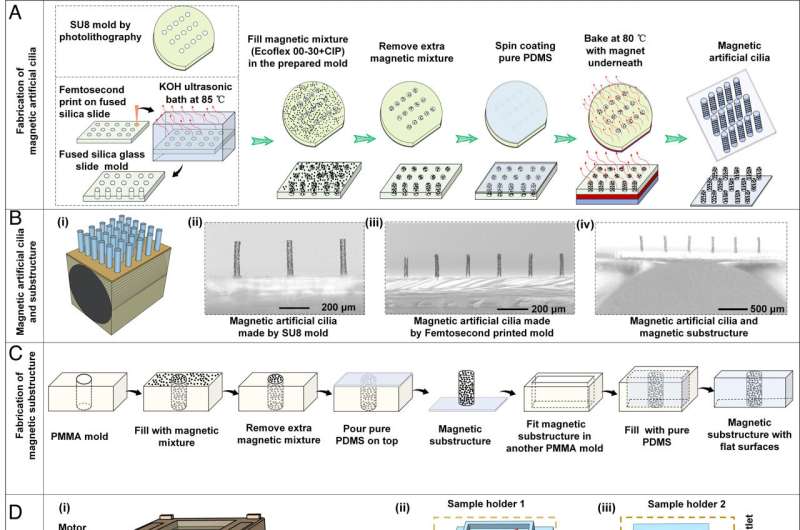September 13, 2023 report
This article has been reviewed according to Science X's editorial process and policies. Editors have highlighted the following attributes while ensuring the content's credibility:
fact-checked
peer-reviewed publication
trusted source
proofread
Engineers create artificial cilia at the microscale

A small team of engineers at Eindhoven University of Technology in the Netherlands, working with a colleague from the Max Planck Institute for Intelligent Systems in Germany, has found a way to create tiny artificial cilia that work at the microscale. Their study is reported in the Proceedings of the National Academy of Sciences.
Cilia are tiny appendages that microscopic organisms use to move through a fluid. Prior research has shown that they are efficient—some paramecia are able to move at a rate of 10 times their own length per second. Prior research has also shown that cilia also move fluid. In the human lung, they work to clear away mucus.
Because of their usefulness, scientists have been studying cilia looking for a way to replicate them for use in desired applications. Such efforts have until now been stymied by the problem of creating working cilia at the microscale. In this new effort, the researchers have overcome such problems and created the first artificial microscale working cilia.
The work began with efforts to get tiny strands to work together in unison. The researchers found that by magnetizing carbonyl iron cilia, they could get them to work collectively like a human wave at a football game by slowly moving a magnet near them. Next, they recreated the strands on a smaller scale and found they could get similar results if they altered the way the magnetic field was controlled.
Next, the research team attached rows of their cilia along the sides of a flat plastic base and set it on top of a cylinder made of a paramagnetic material. Rotating the magnet distorted the field lines in a way that allowed each of the cilia to experience different amounts of magnetism as the magnet rolled. Their response was to bend forward individually and then to snap back into place. Continuously rolling the magnet, led to continuous wavelike action by the artificial cilia.
Testing of their artificial microbe showed it capable of swimming in similar fashion to those in the natural world. Further testing showed that when held in place, it could be used to pump fluids.
More information: Zhiwei Cui et al, Miniaturized metachronal magnetic artificial cilia, Proceedings of the National Academy of Sciences (2023). DOI: 10.1073/pnas.2304519120
© 2023 Science X Network




















